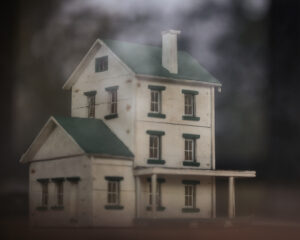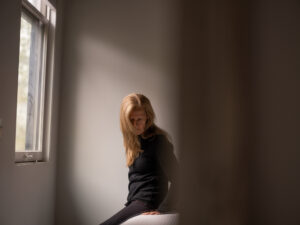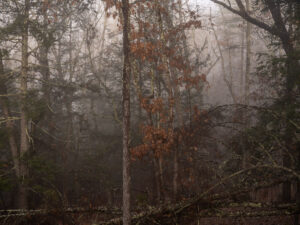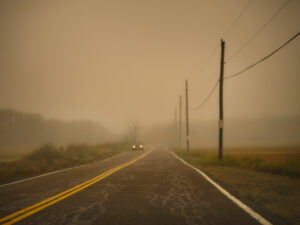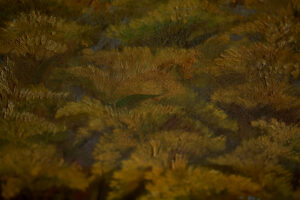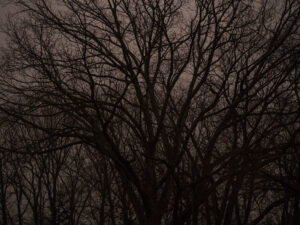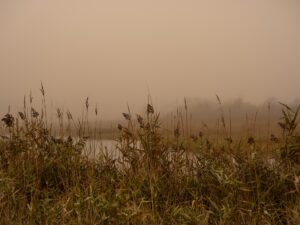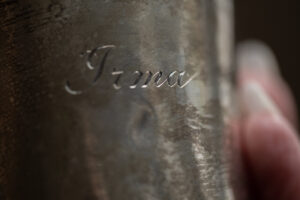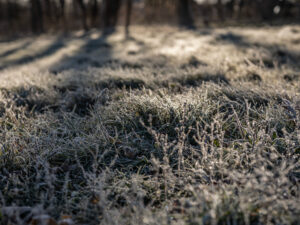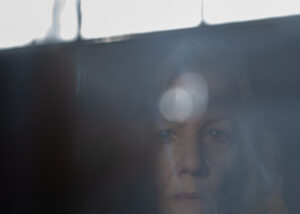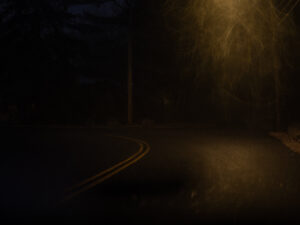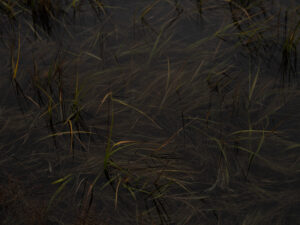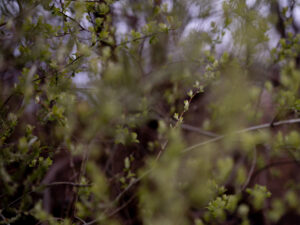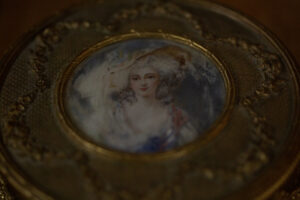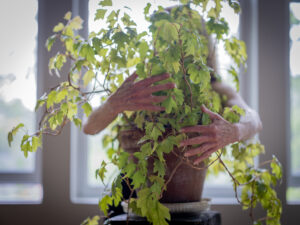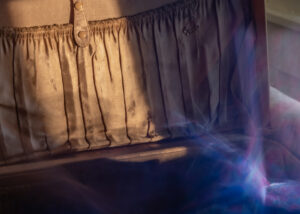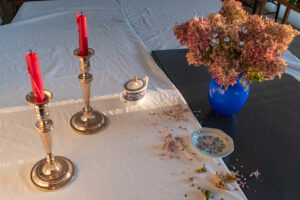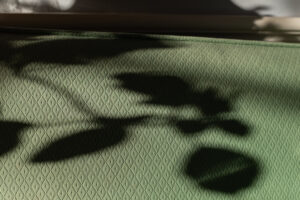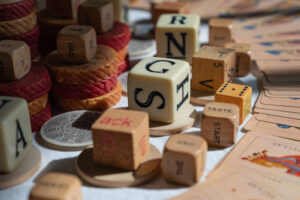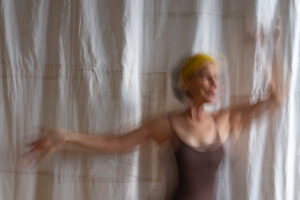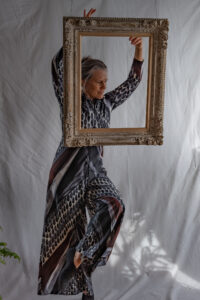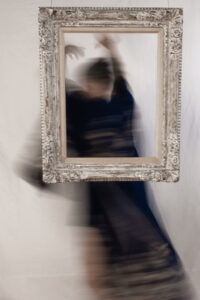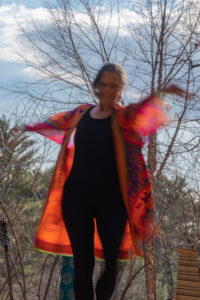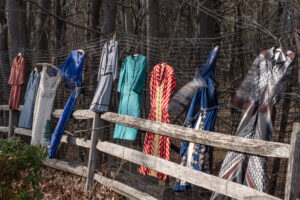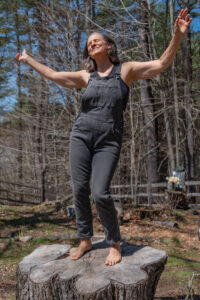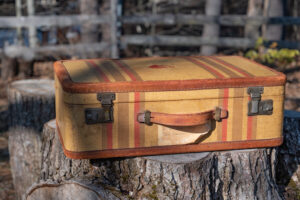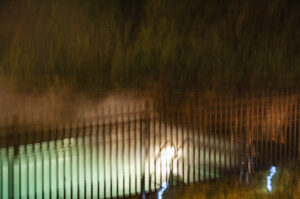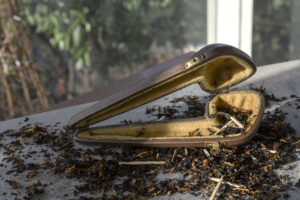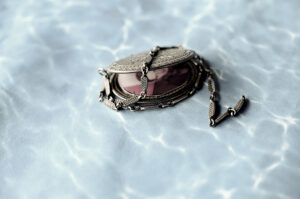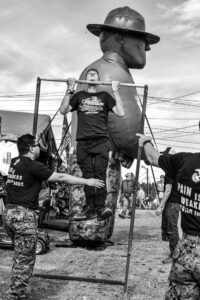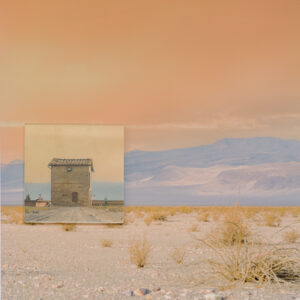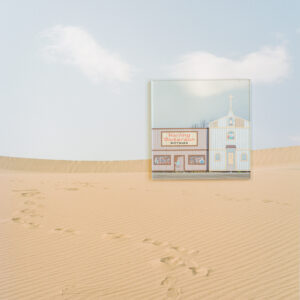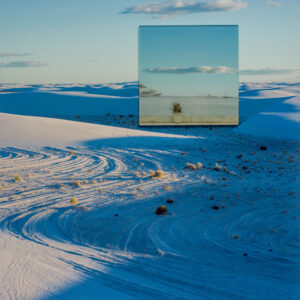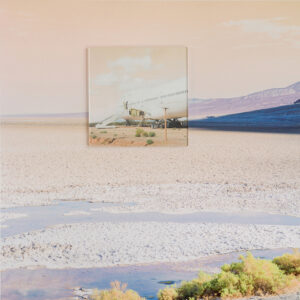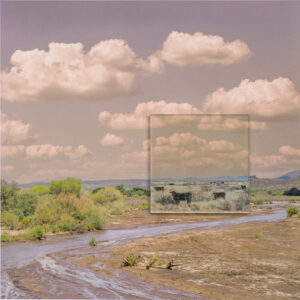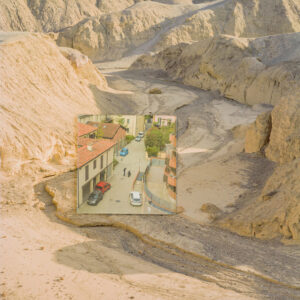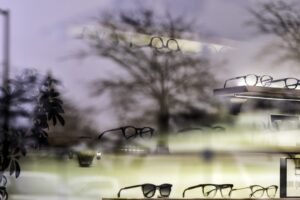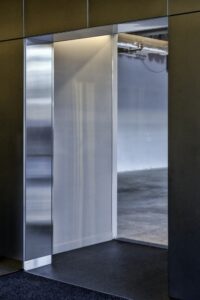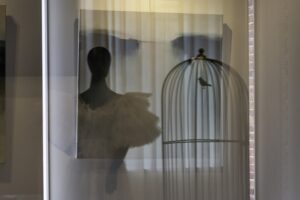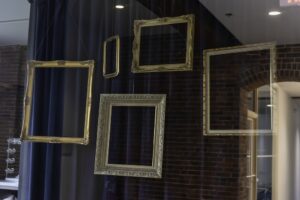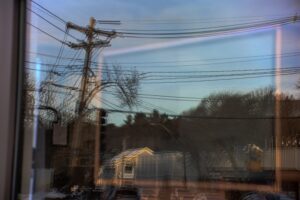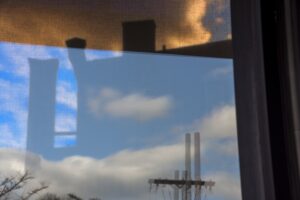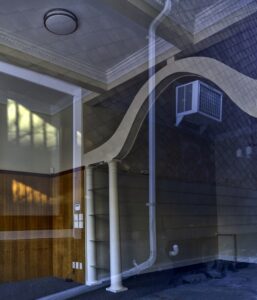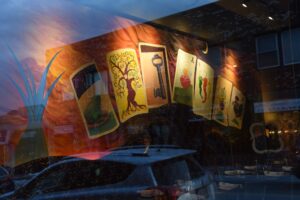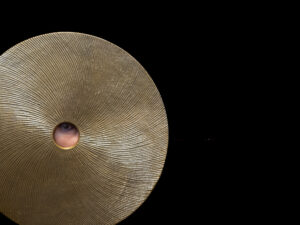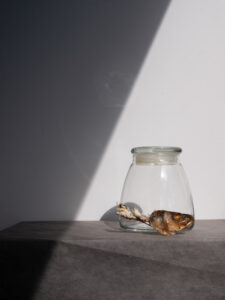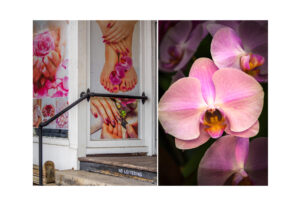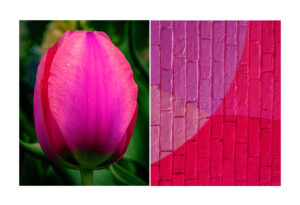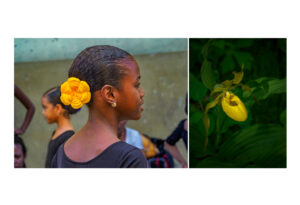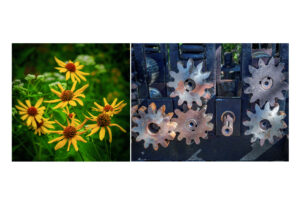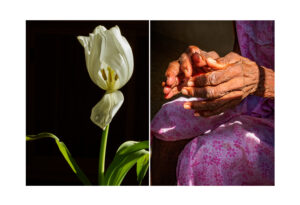CIRCLING
A loop encircles the farm where I grew up. I know it so well. I can close my eyes and picture the twists and turns of the road, the light sifting through the trees, the reflections in the river. When I can’t sleep, I imagine leaving home and setting out to walk the loop. If I move slowly, I rarely get past the first mile before I drift off.
After my mother died, I began to make pictures of my childhood landscape. This terrain is inextricably interwoven into who I am today and how I see the world. My own genetic material comes as much from the landscape as it does from my family. The trees are the grandparents I never had. For me, being in this landscape feels a bit like being in a place of worship. The meditative quiet allows my mind to empty out and reorder thoughts in a way that seems manageable and clear.
Through photographing this familiar landscape, as well as my mother’s objects, I am beginning the process of grieving her loss and coming to grips with my own mortality. These images channel my thoughts and feelings as I work through the brew of emotion that surrounds this phase of life. The passage of time can be such a dizzying blur and it has all caught up with me rather abruptly. As I travel these familiar roads, I feel as though I am on something of an archeological dig, unearthing and exploring a time capsule of lost memories and regret. I am trying to understand who and where I have been all these years, and most importantly, the promise of what comes next.
- Dream
- Satellites
- Inside
- Port Clyde
- Hudson
- Argilla Road
- Canvas
- Veins
- Marsh
- Artifact
- First Frost
- Window
- Evening
- Bend
- Tangle
- Loop
- Springtime
- Treasure
- Wrapping my Arms Around You
About
Margaret Lampert is a photographer based in Cambridge Massachusetts. Growing up on a dairy farm north of Boston with two very visual parents, she was influenced by art and the natural world in equal measure. Margaret studied Art History & English at the University of New Hampshire and just after graduating college she began working in the department of Prints, Drawings & Photographs at the Museum of Fine Arts in Boston. Here, while assisting the acting curator of the photography collection, Margaret fell in love with the medium and, with little technical knowledge but a head full of pictures she set out to become a photographer. Through apprenticeships and workshops she honed her skills and has been making pictures ever since. With her background in fiction writing and art history, and a deep curiosity in human nature, Margaret seeks to create visually and emotionally compelling narratives through portraiture and landscape.
